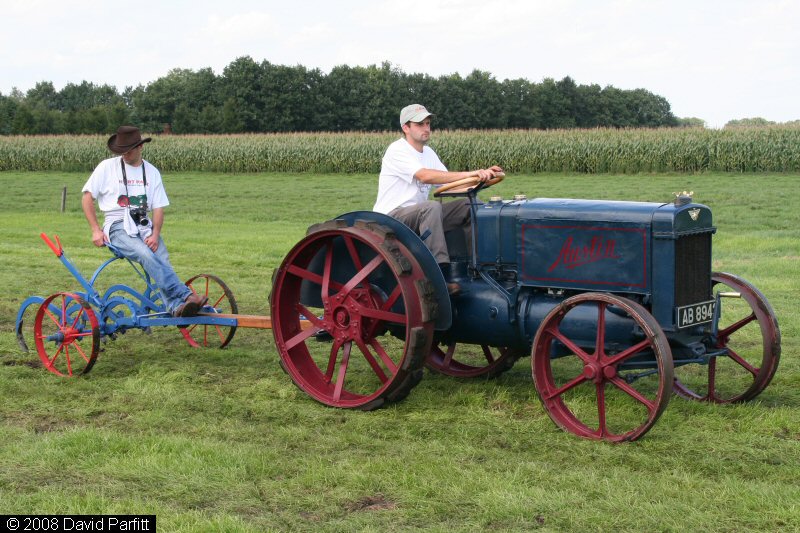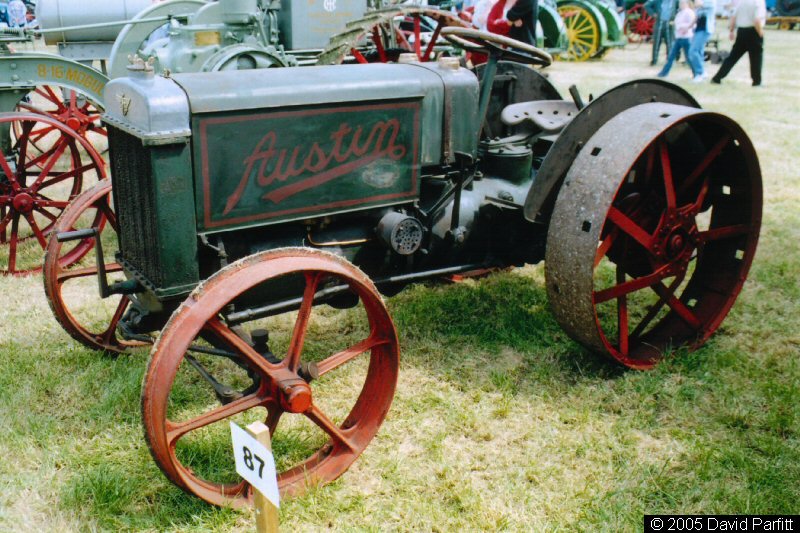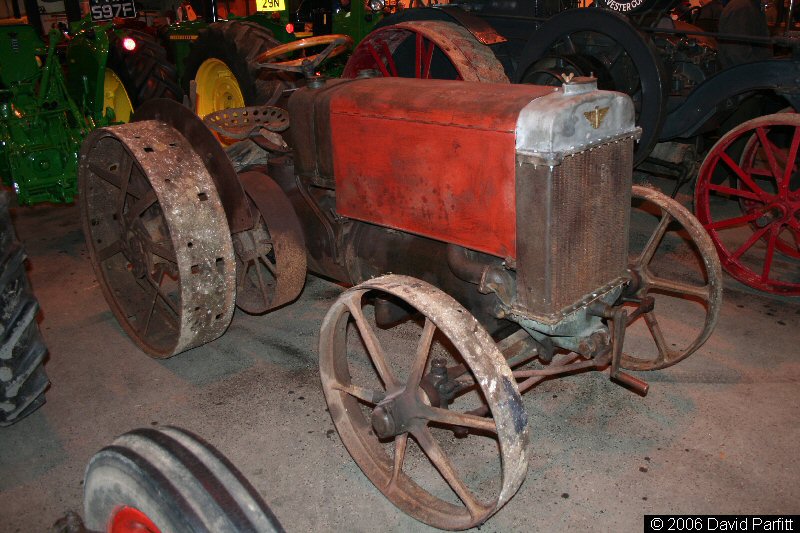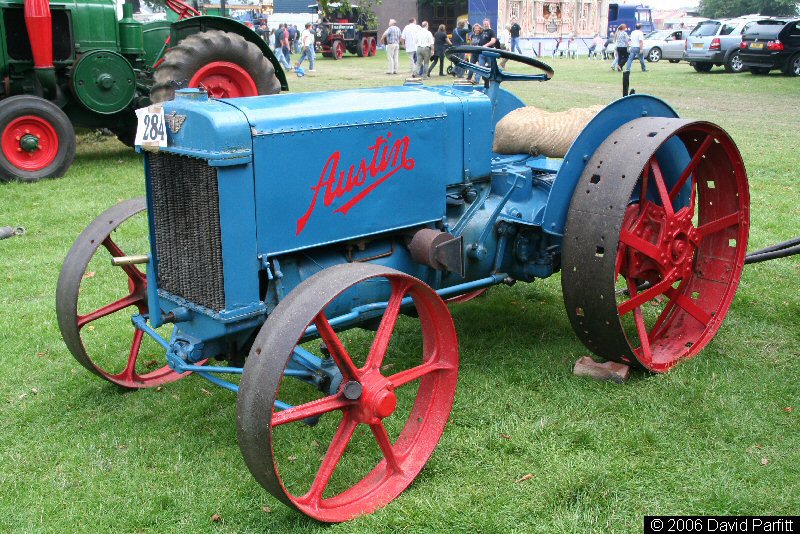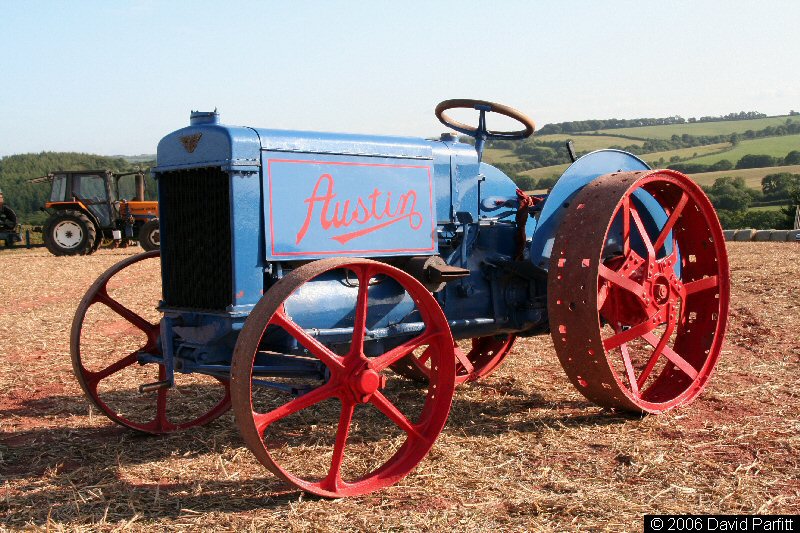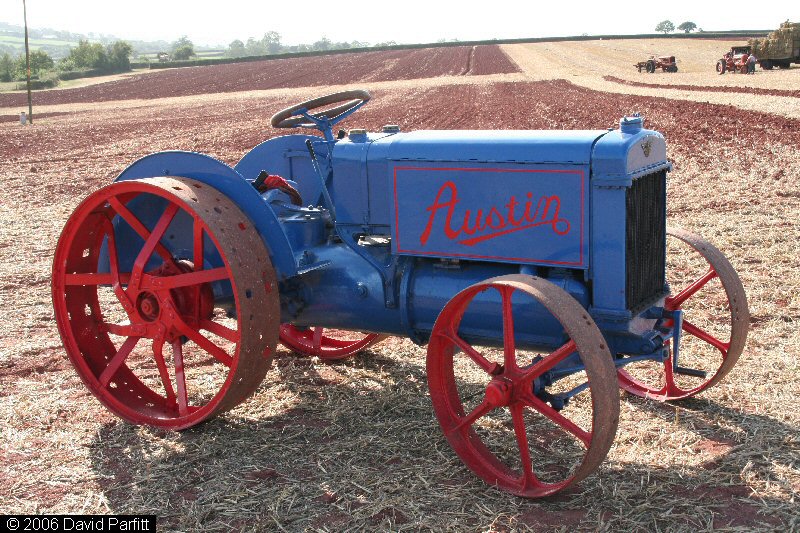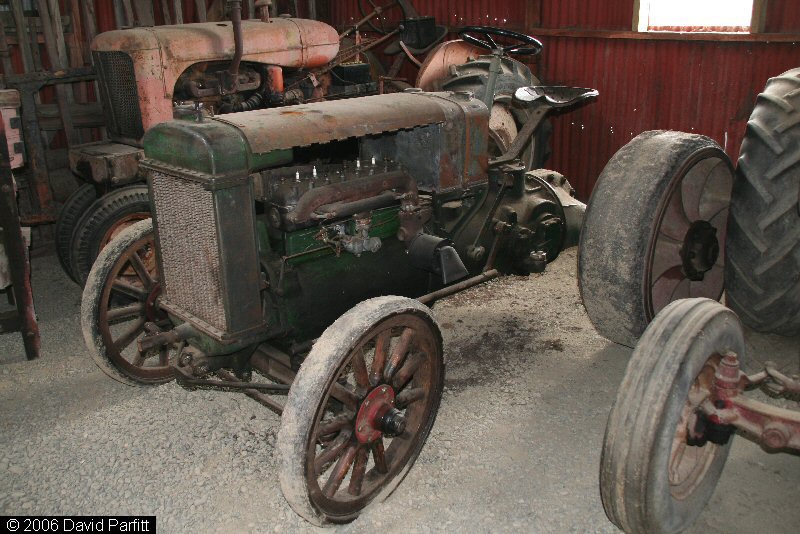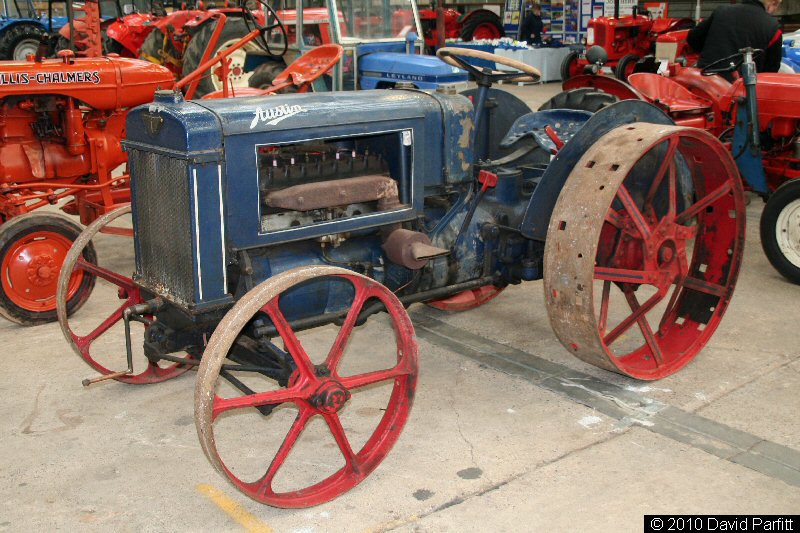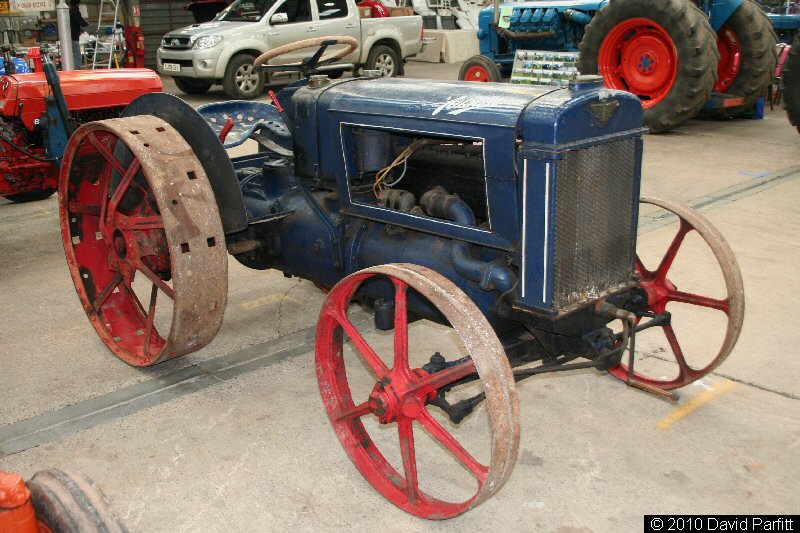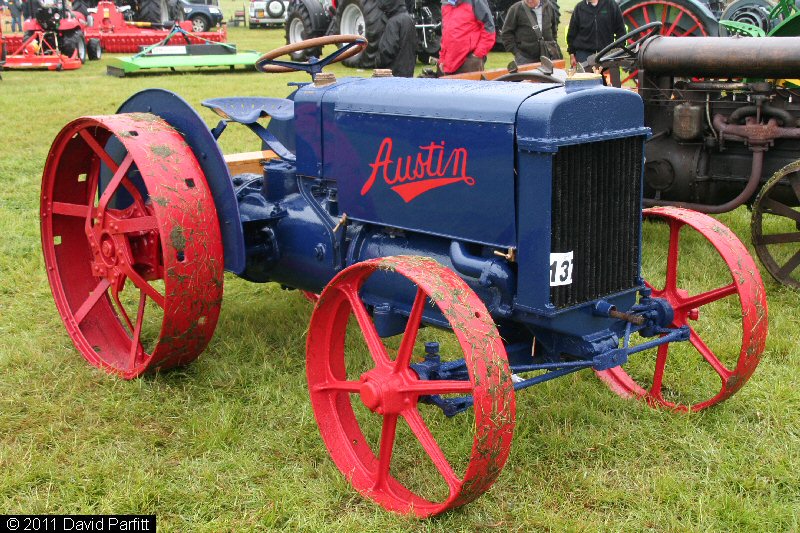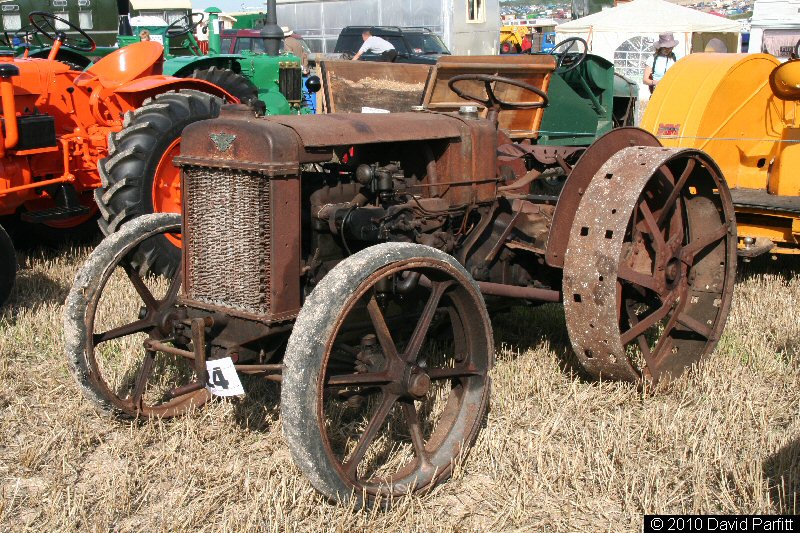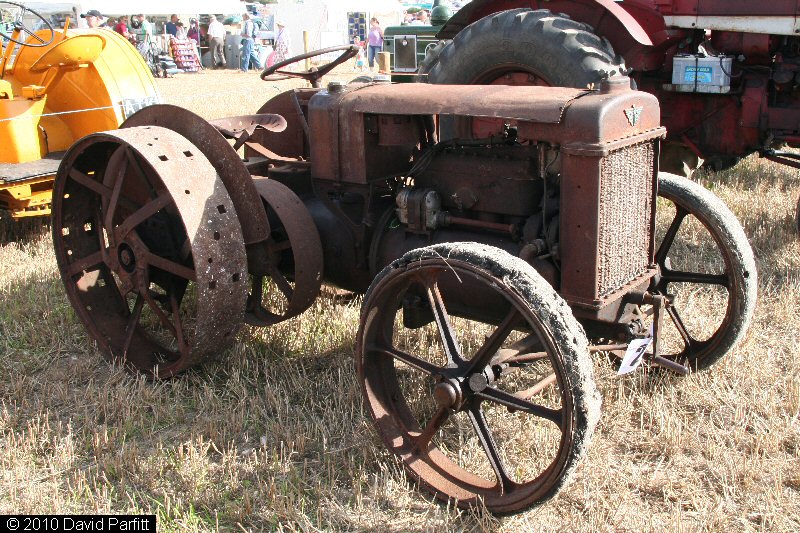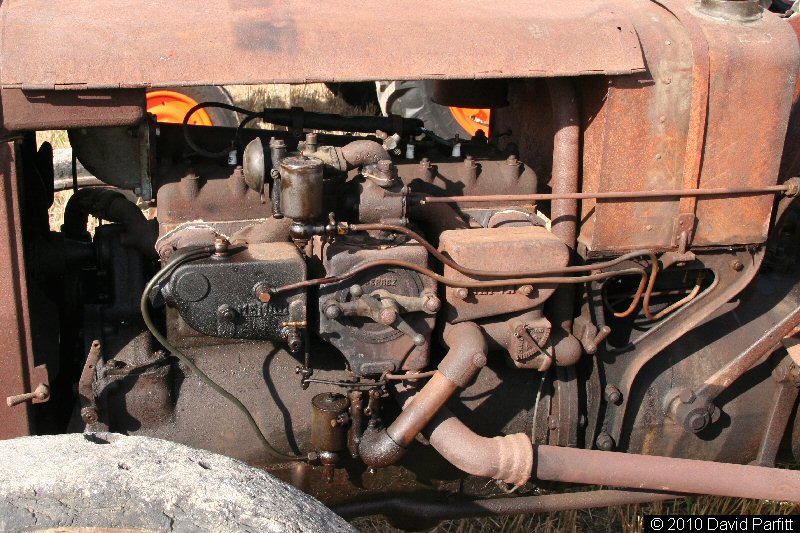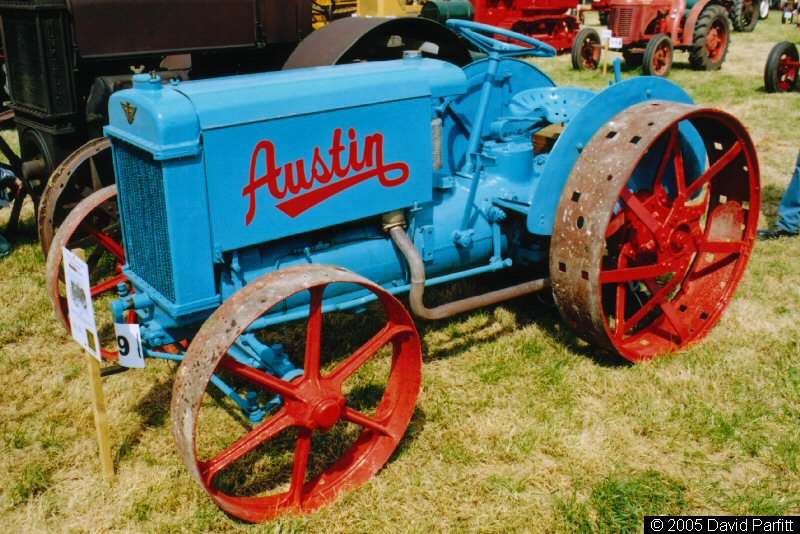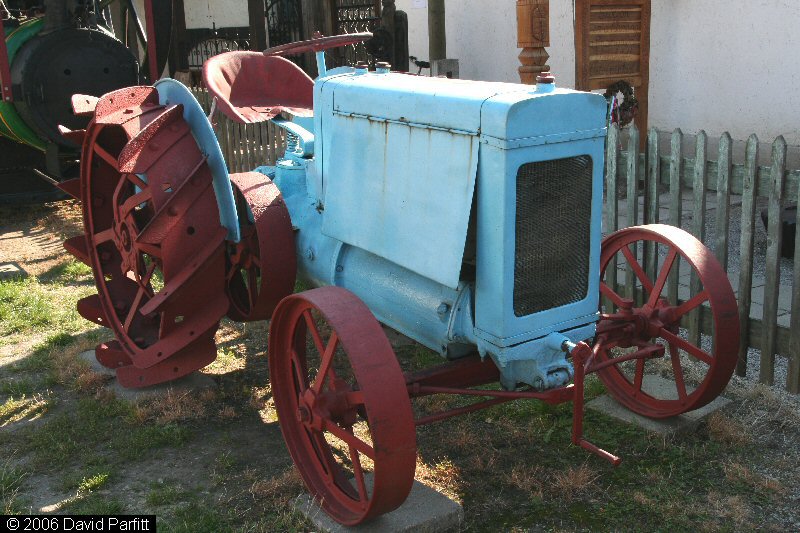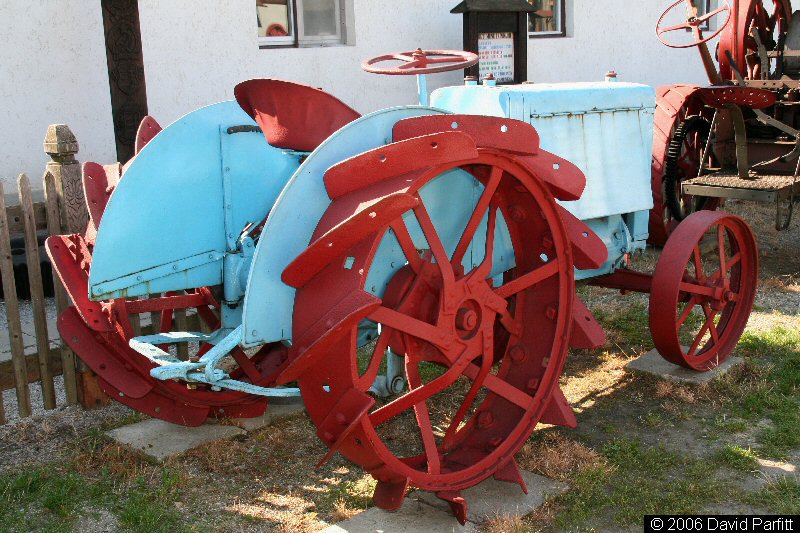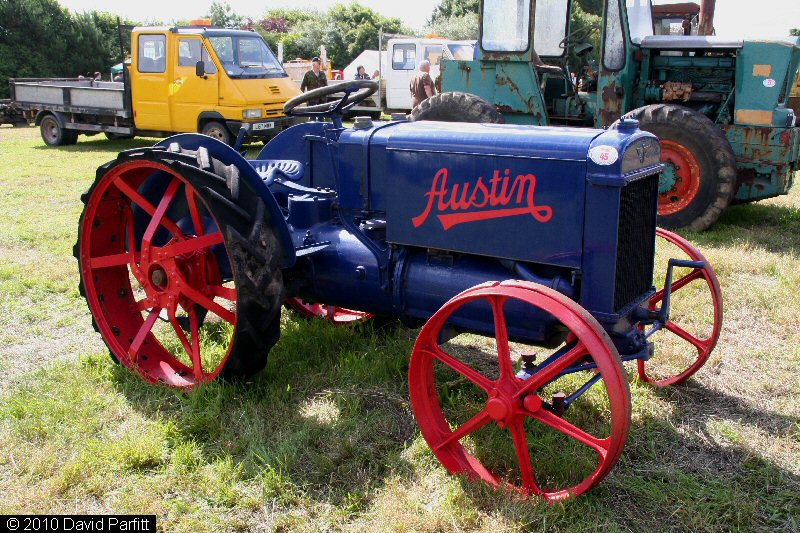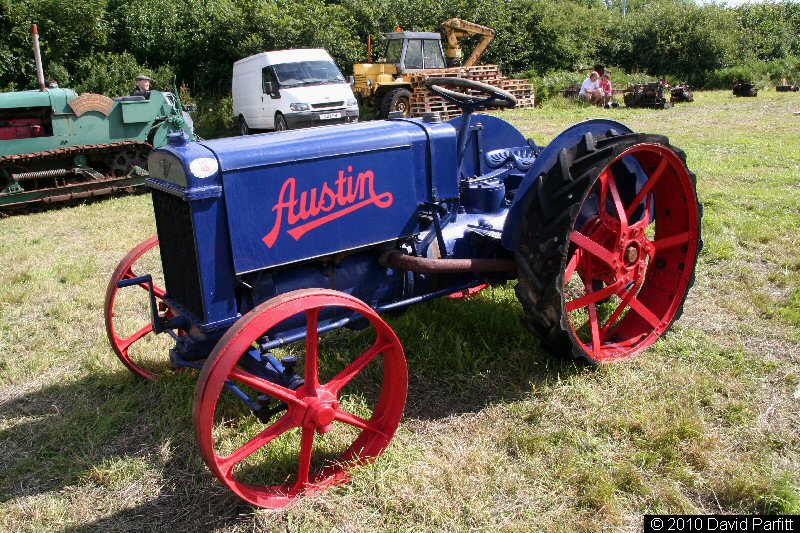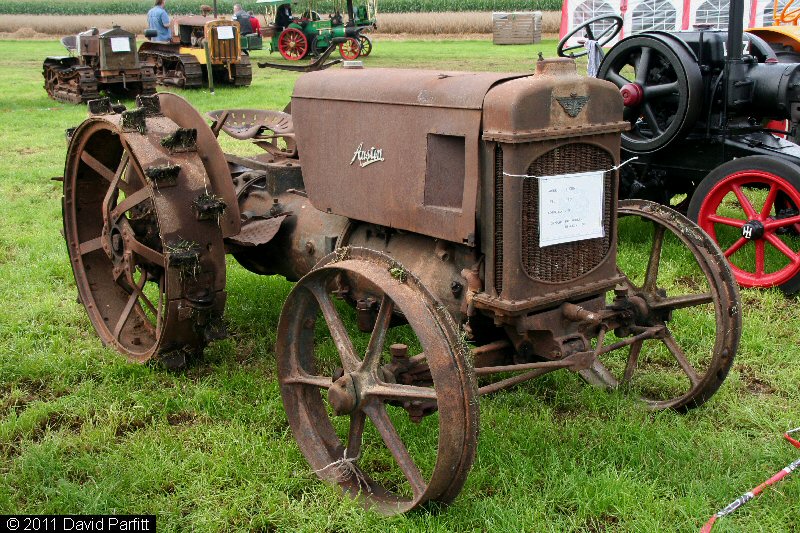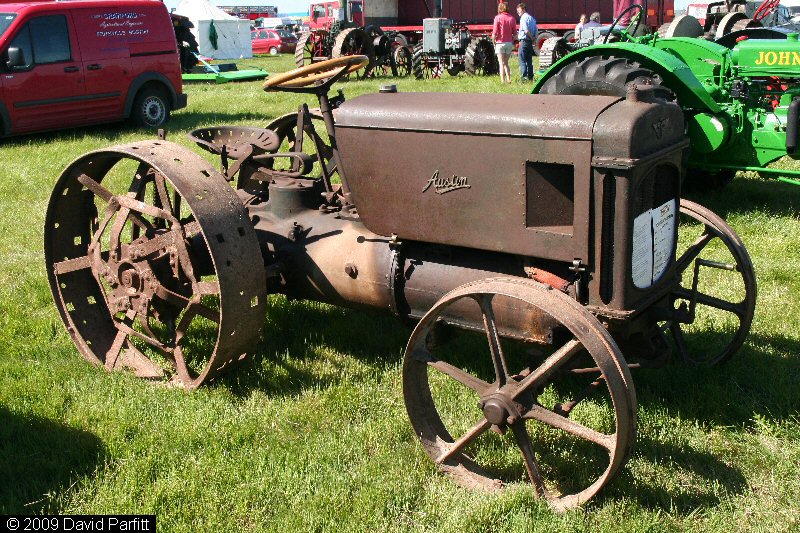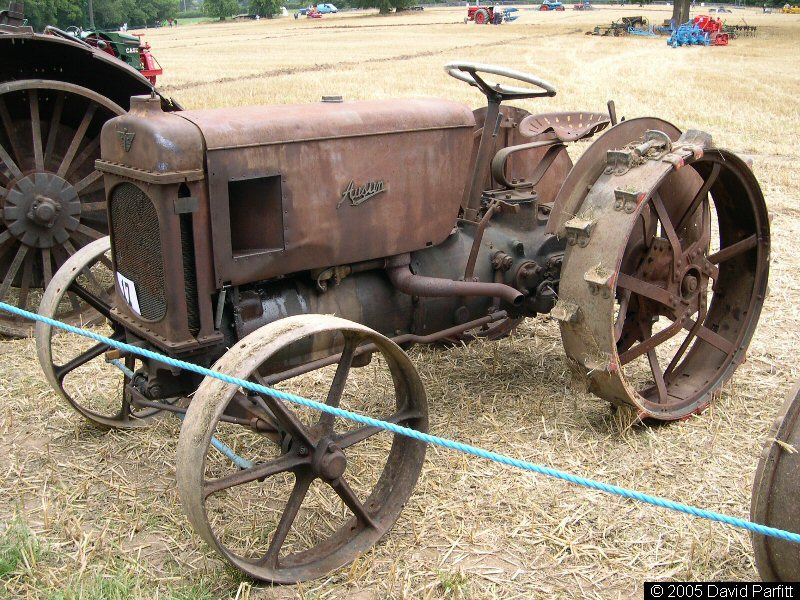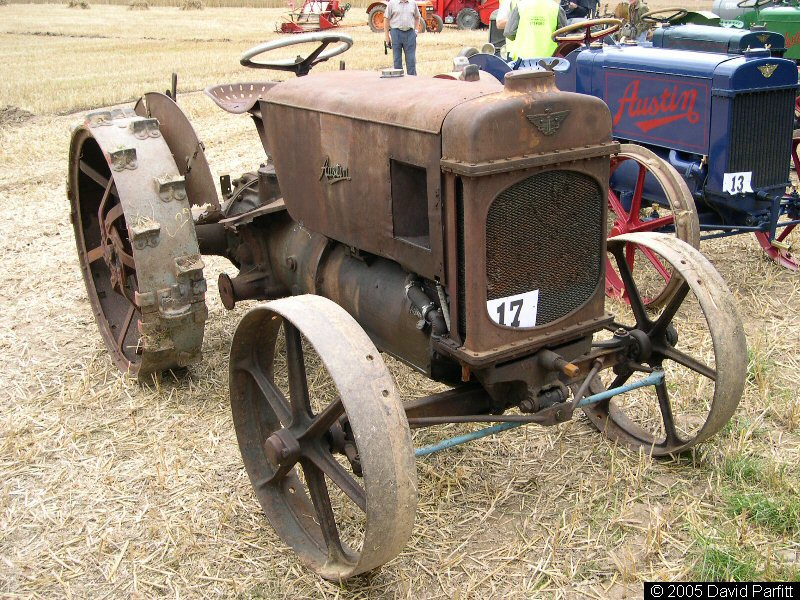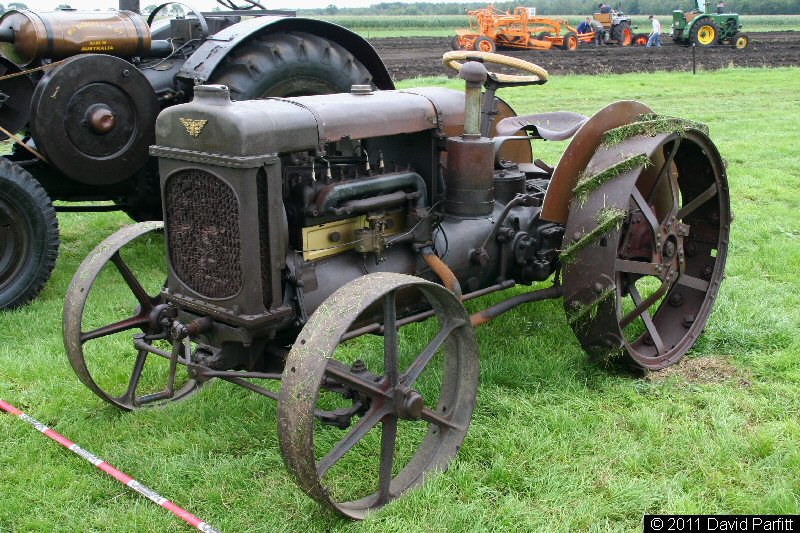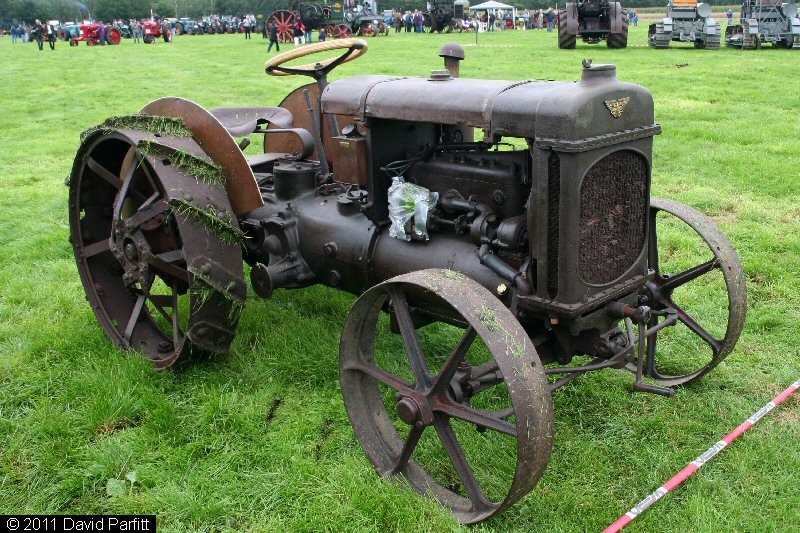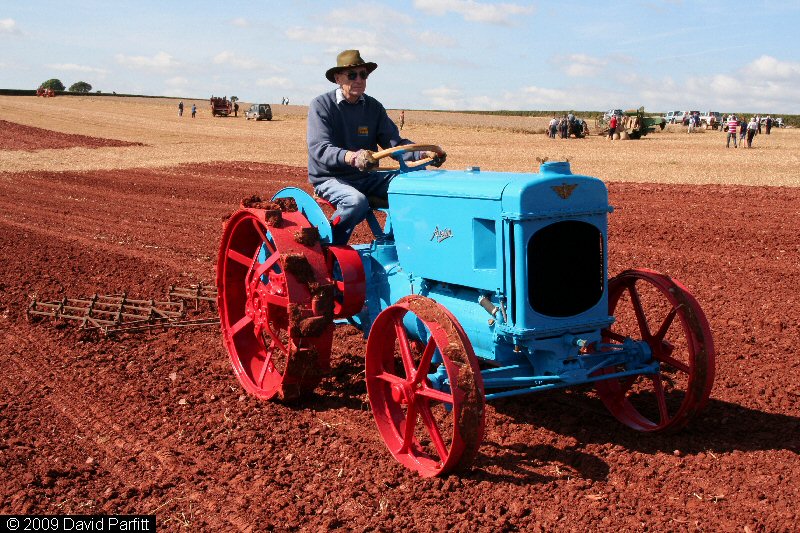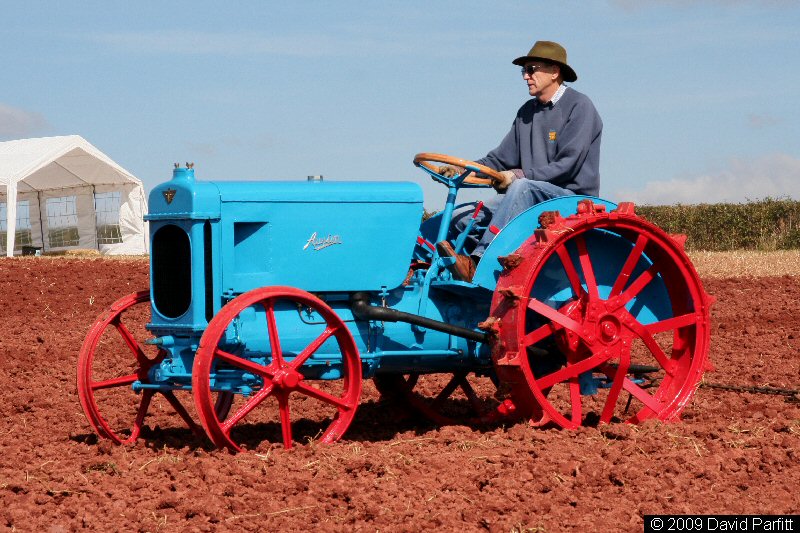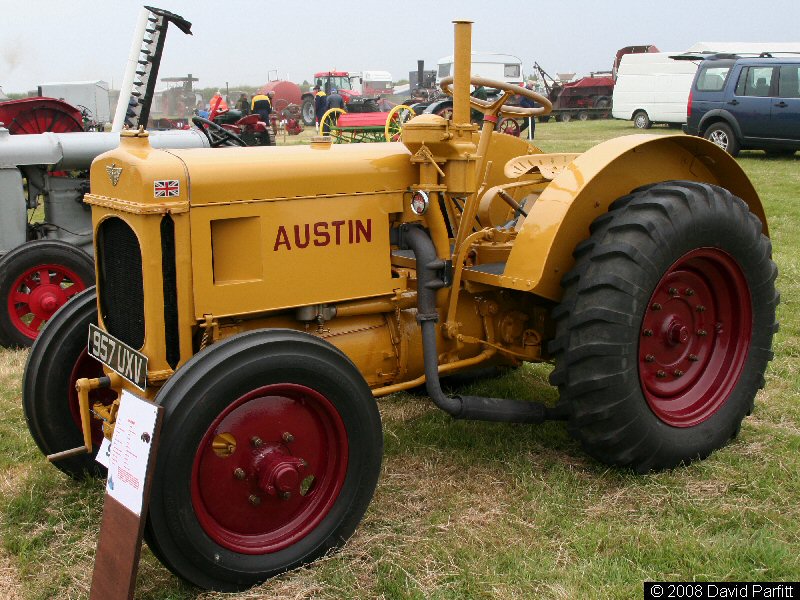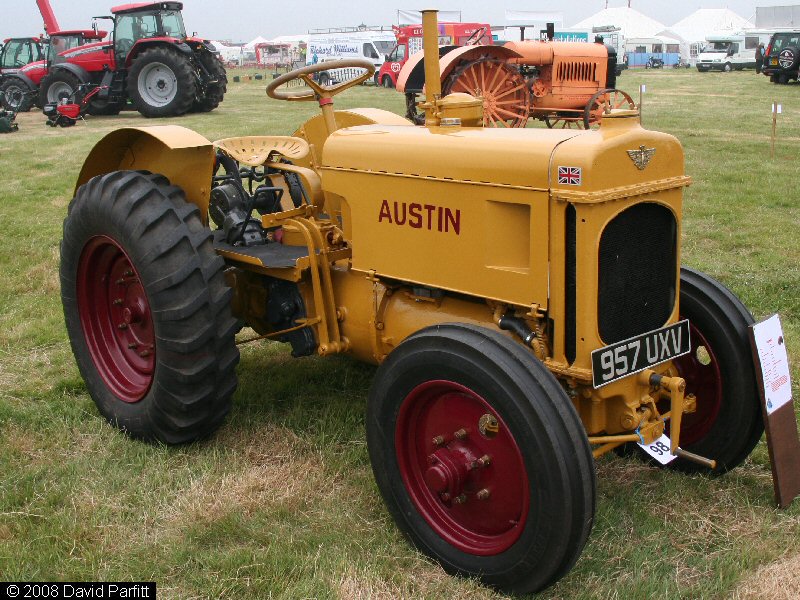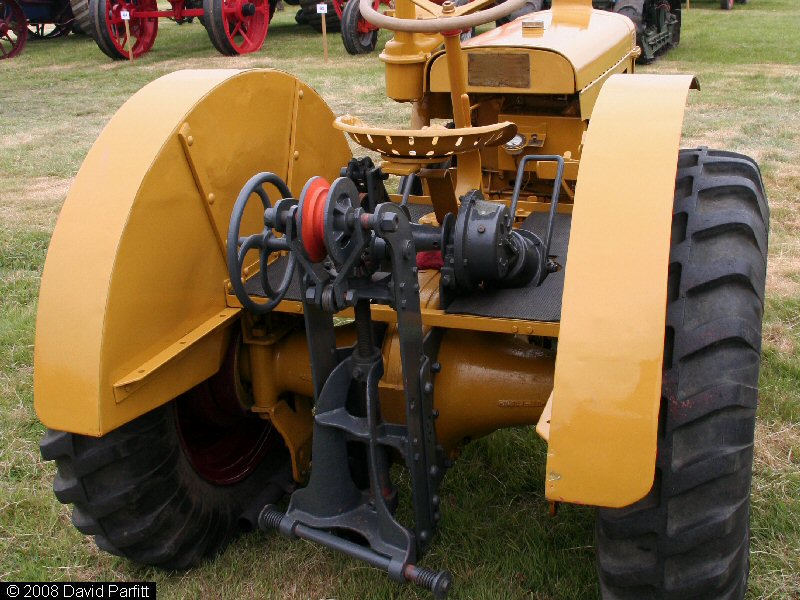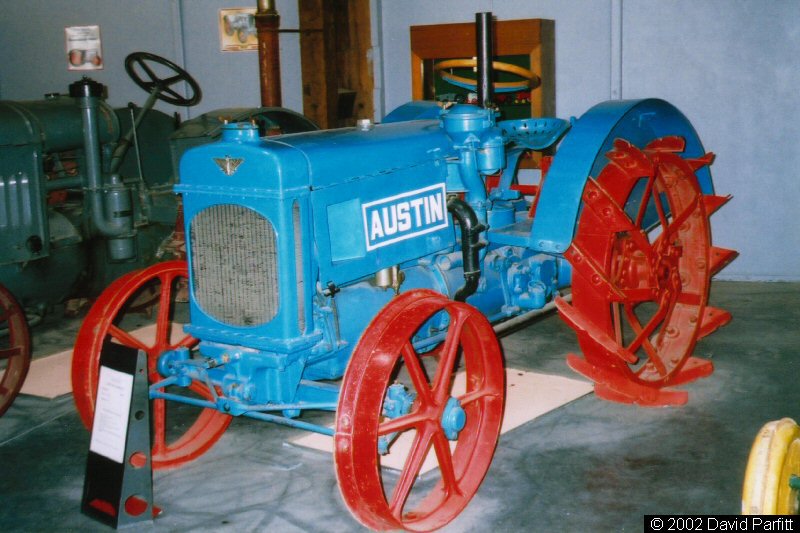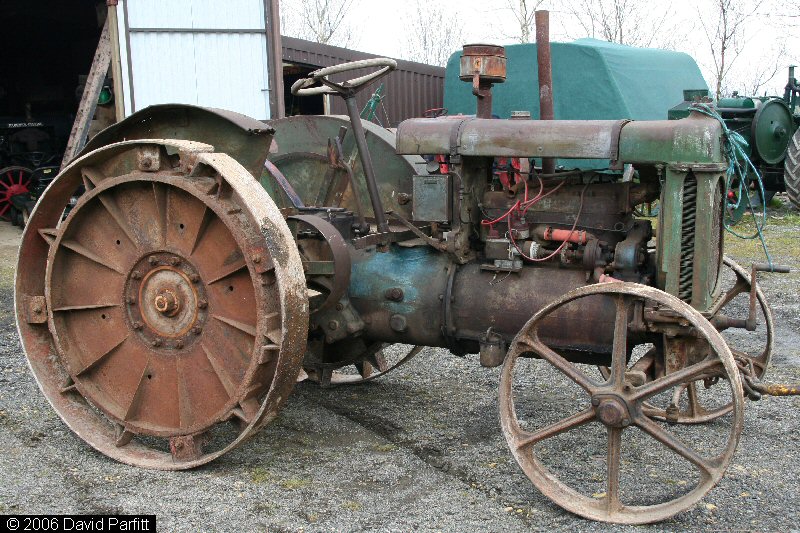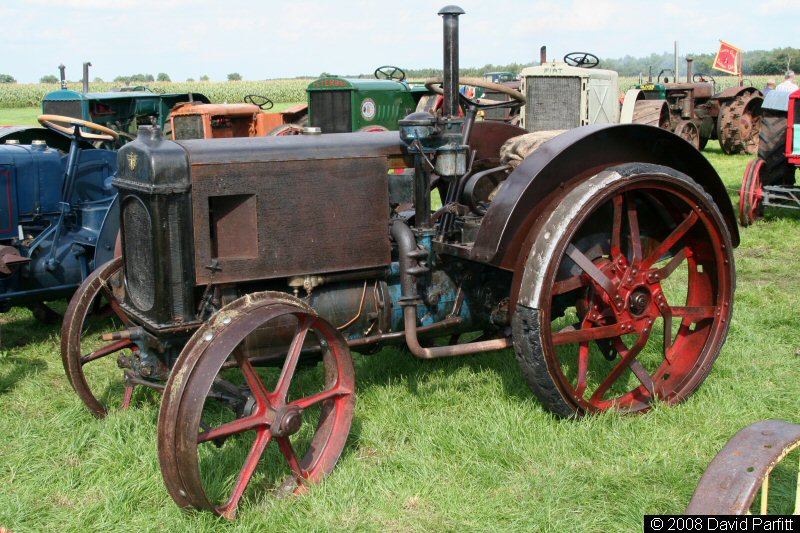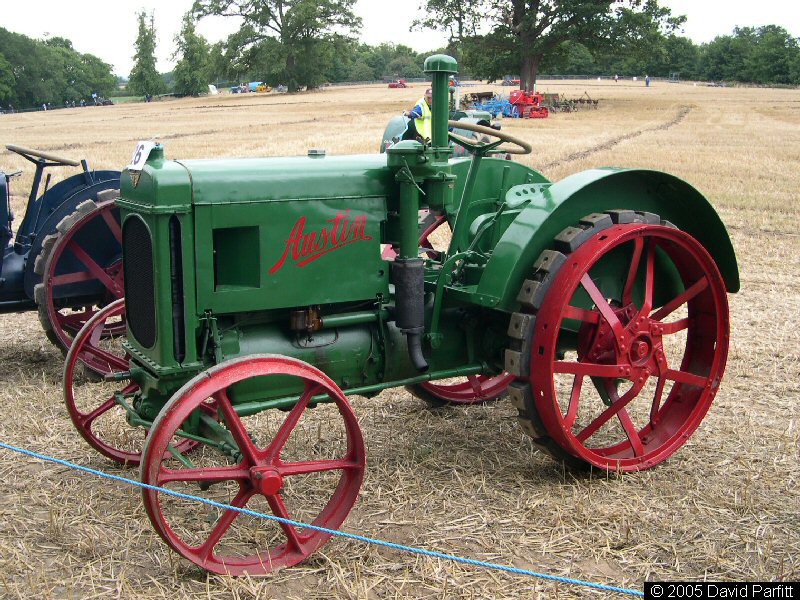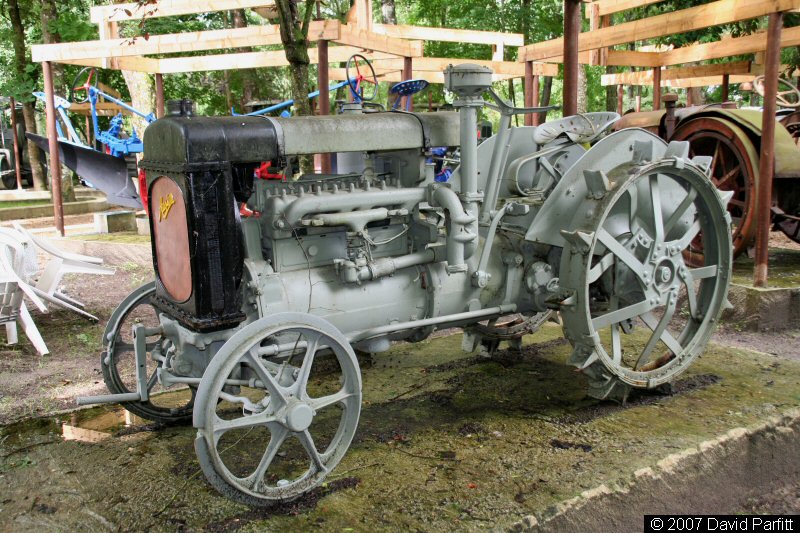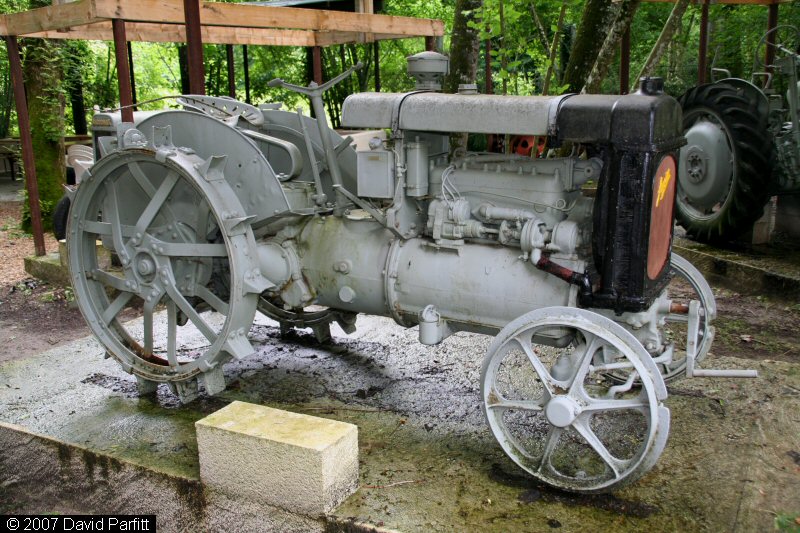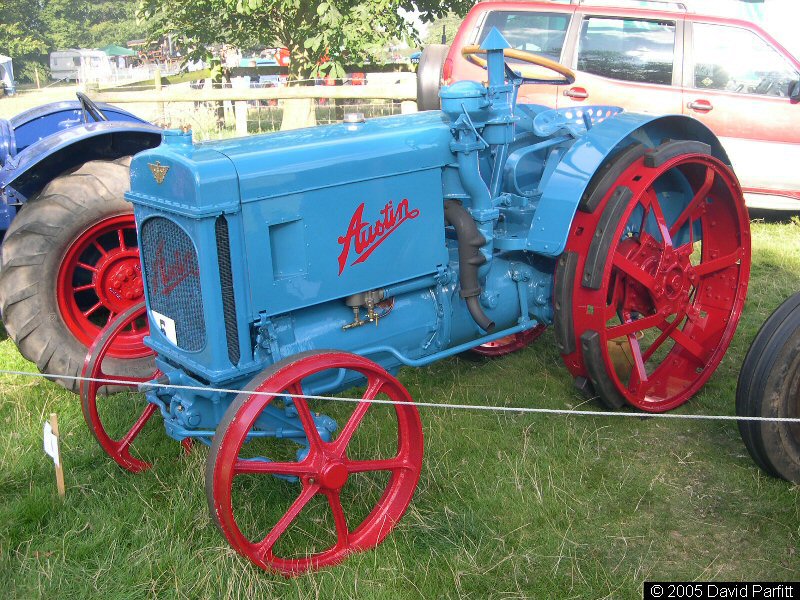Austin
Austin Motor Co. Ltd, Longbridge Works,
Northfield, Birmingham, England / Societe Anonyme Austin, Liancourt
(Oise), France
History
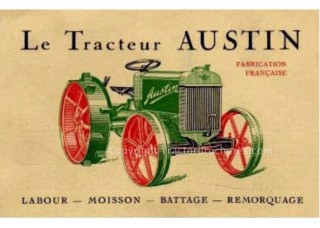 | The Austin Motor Co. was founded in 1905 by
Herbert Austin, with the first car being produced the following
year. In 1913 Austin also began to build trucks, but with the onset
of the First World War the factory was turned over to the production
of munitions. During the war, Austin was involved in selling
imported American tractors, and when hostilities ended he turned his
attention designing his own machine, spurred on by the success of
the US-built Fordson. Rather than develop a completely new engine
for this tractor though, he chose to use a proven 20 hp power unit
that was already being used in Austin cars and trucks, and was
available in either petrol-only or petrol/paraffin versions. When
the Austin Model R tractor emerged in 1919, it was evident that its
design owed a great deal to that of the Fordson. In fact it was
better engineered and more powerful than its American rival, but the
down side was that it was considerably more expensive and questions
were also raised about its reliability. Nevertheless, Austin
tractors were exported as far afield as Australia, South Africa and
South America.
Austins also proved particularly popular in France,
and to overcome the problem of high import duties imposed by the
French government, Austin decided to open a factory there at
Liancourt in the Oise region north of Paris. Production at the
Liancourt factory began in August 1919, with tractors initially
being assembled from parts shipped from Longbridge. Sales were high
and the French import restrictions now worked to Austin's advantage,
keeping the American Fordsons out. French-built Austin tractors were
even exported back to England. When tractor production ended at
Longbridge in the mid-1920s, Societe Anonyme Austin, as it was
known, began to develop its own models that incorporated a number of
improvements on the original English design. By the end of the
decade, a whole range of Austin tractors were available, including
two different widths of vineyard model and industrial versions on
either solid rubber or pneumatic tyres. The 1930s saw the
introduction of diesel engines into Austin tractors, and these
models were offered at least until the start of the Second World
War, when the Liancourt factory fell into the hands of the invading
Germans. As for Herbert Austin, he died in 1941 at the age of 74,
and in July 1952 the Austin Motor Co. merged with the Nuffield
Organization to form the British Motor Corporation (BMC).
Model Details
English-built tractors
(1919-1924?)
The Austin Model R was produced from 1919 and used an
Austin four-cylinder petrol/paraffin engine. This had a bore and
stroke of 3.75 x 5 in and developed 27.39 hp at 1500 rpm. The
tractor had two forward speeds and one reverse with a cone-type
clutch, and was fitted with a tubular radiator and very large belt
pulley. A Zenith carburettor and North and Sons (Watford) Ltd
magneto were used. English-built Austin tractors seem to have been
painted either dark blue or green, with red wheels.
French-built tractors
(1921-1939?)
Photo of
French-built Austin 22-35hp from a 1931 trade journal (click on
image to enlarge)
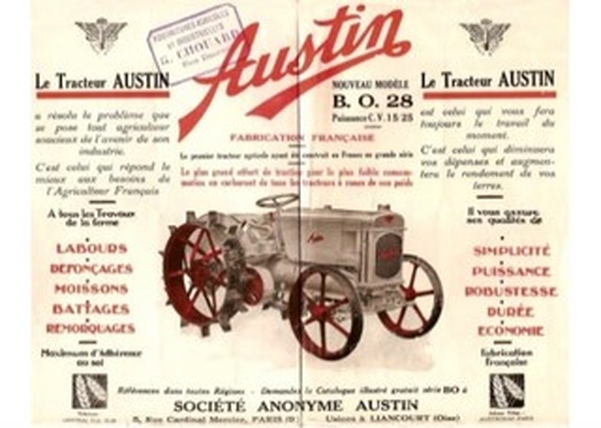 | The first French-built Austins of the early
1920s were basically just English tractors assembled in France. At
some point though, they took on their own identity, with the most
noticeable differences being the addition of a water pump as
standard and oval radiator surround, and replacement of the short,
deep two-stopper fuel tank with a longer, shallower tank that passed
under the bonnet. The first distinct French-built model to be
featured in advertising seems to have been the A.M.26, which emerged
in 1926 (it appears that the last two digits in this and subsequent
model names indicate the year it was introduced). A novel form of
removable rear wheel grip was provided in the form of two
semicircular bands with lugs attached for each wheel, which were
fixed together using a pin and wedge. The A.M.26 was followed by the
slightly-modified B.O.28 model, with disengagable pulley and changes
to the clutch and gearbox, perhaps intended more for threshing
contractors? Other variants included the I.B.A.28 and I.P.E.29
industrial tractors on solid rubber tyres and pneumatics,
respectively.
In 1929 the S.A.3 model was announced, together
with a V.33 vineyard version - these featured numerous improvements,
including three speeds and an improved air-cleaner. The early 1930s
saw the introduction of a whole new range, with the flagship model
being the D.E.30 15-25 hp tractor. Two different widths of vineyard
tractor were now offered - the V.34 and the V.90 - and a larger,
more powerful 22-35 hp model also joined the lineup. Flat-topped
mudguards and an even more sophisticated design of air-cleaner were
standard. The 1930s also saw the introduction of diesel versions of
the 15-25 hp and 22-35 hp models, as well as the introduction of a
larger 45-55 hp tractor, all of which used Austin's own design of
diesel engine. Prior to this, some Austins had been fitted with
proprietary CLM diesel engines.
|




